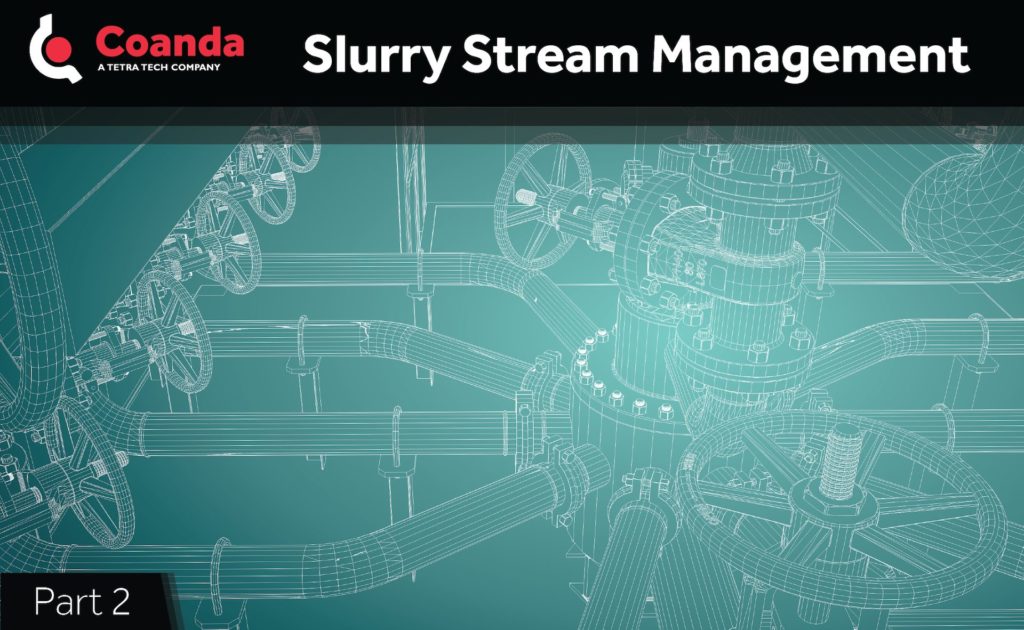Slurry Stream Management
Posted on February 16, 2021 Geotechnical Mining Non-Newtonian Flows
This post was originally published in three parts which have been combined below
Part 1
Many mining operations rely heavily on the conveyance of slurrified ore or tailings between the various stages of their processing flow sheets. Hydrotransport and slurry pipelines play a vital part in the profitability of the plant, whether transferring ore concentrate from the SAG or ball mills to the primary extraction stage, or feeding flotations cells, hydrocyclones or thickeners.
Each component of the slurry handling system can often benefit from evaluation and optimization to improve reliability and efficiency, while also reducing water and energy consumption, which also minimizes environmental impacts.
Even relatively minor improvements in how the ore slurry is handled and managed can have significant impacts on the overall performance of key steps in the extraction process.

Part 2
Tackling common slurry stream challenges can yield significant gains:
• Complex Rheology – Many processes along the flow sheet are complicated by non-Newtonian behaviours exhibited by slurry flows: yield strength, shear sensitivity and thixotropy. These are often exacerbated by the addition of coagulants, flocculants or other process aids.
• Slurry/Multiphase Flows – Grinding and Classification processes can benefit from improvements in particle size distribution, dispersion and slurrification. These factors influence the homogeneity of the resultant slurry stream.
• Distribution and Wear – Slurry streams can be difficult to distribute to various trains or parts of the plant, often leading to inconsistencies between feed streams or premature wear on process equipment. Improvements here can enhance reliability, reduce maintenance needs, and increase throughput.
• Separation and Tailings – Further down the flow sheet, in the separation, dewatering and tailings phases, slurry management continues to matter. What is effective for the recovery process can hinder tailings management and water recovery, by dispersing fines or clays that are then difficult to remove. Improvements here can lessen potential environmental impacts.

Part 3
When looking at any particular system or subsystem within a mine operation, issues with separation, dewatering, distribution and wear are typically interrelated with the common behaviours of multiphase flows, non-Newtonian fluids and their rheological properties. A deep understanding of these phenomena is often necessary to address or anticipate issues that can impact plant operation.
While each mine is unique in its requirements and operational constraints, Coanda has extensive experience in the analysis, design and operation of many different slurry handling systems to realize tangible and commercially relevant results. These include closed-loop recirculating systems and batch-mode operations across a range of scales. Projects aimed at solving these commercial problems typically employ a combination of physical, computational, mathematical and theoretical modelling, combined in the best manner to suit each specific application and client need.



